-
Happy Birthday ICMag! Been 20 years since Gypsy Nirvana created the forum! We are celebrating with a 4/20 Giveaway and by launching a new Patreon tier called "420club". You can read more here.
-
Important notice: ICMag's T.O.U. has been updated. Please review it here. For your convenience, it is also available in the main forum menu, under 'Quick Links"!
You are using an out of date browser. It may not display this or other websites correctly.
You should upgrade or use an alternative browser.
You should upgrade or use an alternative browser.
mazar I shariff RSC line roms
- Thread starter jahgreenlabel
- Start date
Well few quotes to explain the Kafiristanican vibe... 
https://www.icmag.com/ic/showthread.php?threadid=27439
Anyways back to afghan cannabis.
When vavilov visited afghanistan we mentioned how cannabis sativa l. was the only type under cultivation. However there were two subgroups of indica that he found growing wild. Cannabis indica var. afghanica and Cannabis indica var. kafiristanica . The afghanica variety produced dark grey mottled seeds and the kafiristanica produced very large grey colorless seeds (DEEP CHUNK!!!!! AHA) so is deep chunk actually predominantly Indica var kafiristanica as opposed to Indica var afghanica? One of the criterion for kafiristanica is small leaves however hybridization with sativa and a few decades under cultivation and irrigation could change this. A couple criteria for kafiristanica as opposed to aghanica is that kafiristanica has 5-7 leaflets as opposed to 5-9 and dry seeded kafiristanica flowers freely-shatter releasing the seeds I don't know if vavilov's afghanica samples shattered but typical indicas don't shatter. Freely shattering flowers is a wild trait as it allows seed to disperse further and more easily. Either way I think the deep chunk is as close to pure kafiristanica as we can find. I'm thinking the petrolia is more close to a very high quality good sample of standard vavilov afghanica or richard evan schultes indica. The deep chunk seeds are very much unlike any afghan seeds I have come across and I think they show exactly how unusual this sample is.
Yeah but the vavilov afghanica did too both of the wild afghani indica varieties vavilov came in contact with in the 1930 had freedly shattering flowers. Also this is wild in afghanistan so between the wind the altitude the low nutrient and the lack of water in the ground and air things may have been different. So I'm guesseing it is either envirnmentally caused or have a few decades of being domesticated with some hybridization of older cultivated hash sativas may have changed this. I'm just fascinated by these seeds because it is such an oddball type of seed it can say a lot about it's history. The seeds are definitely heavily evolved for an arid climate. Those big seeds trap a lot of moisture. I definitely think a lot of the cotyledons would rot if these were grown in a rainy environment without human asistance. I really think the history and pedigree of the deep chunk is really something special it may be the only real kafiristanica landrace dominant afghan heirloom strain in existance. I think I've seen quite a few afghan seeds but none like this. This could be the herb of Alexander the Great.
here's a picture of Richard Evans Schultes in Kandahar with some afghan girls!!!
Sorry but I don't know the year of this pic
View Image
Well that pretty much confirms that the original afghani hash plant was not a sativa.
https://www.icmag.com/ic/showthread.php?threadid=27439
so where are you getting your information about the traits of kafiristanica plants from if you haven't read Vavilov? Kafiristanica, if we accept it even is a valid classification, is not a cultivated type - it is wild...
I get the impression you haven't visited these places and may not understand what is meant by wild cannabis
also, stuff you've posted there contradicts itself - it's very garbled
as mentioned, according to Vavilov the only plants being grown in Afghanistan in the '30s were large 'sativas'... this was happening up in the region around Balkh and Mazar-i-Sharif in the north
as for Zamalito's comments - what he and you don't seem to have grasped is that kafiristanica is the taxon for wild progenitor plants of drug 'sativas'... kafiristanica is not a cultivar... cultivar = cultivated plant (does not necessarily mean commercially)
indica var. kafiristanica = wild uncultivated progenitor of indica var. indica (aka 'sativa'), a cultivated species
beyond that, I'm not sure what I can do but repeat what has already been said
I don't know much about Deep Chunk - but it may well show 'sativa' traits...
while the Western grow scene and cannabis botanists seem keen on the idea of indica var. afghanica as a pure variety I don't see much evidence for it in reality
in reality cultivated plants taken from Afghanistan and Pakistan show a mix of narrow leaflet and broad leaflet traits - perhaps as a result of hybridity...
in so far as they have kafiristanica in them it is because of the amount of wild pollen blowing around in these regions - and that will manifest in grows as untamed wild plants that will quickly be rejected by any Western breeder
so in conclusion saying a heavily cultivated line like Deep Chunk has kafiristanica in it is in essence just a garbled way of saying it shows 'sativa' traits... wild expressions may emerge now and then for all I know, which will be kafiristanica, but not in the way you or Zamalito seem to understand it
I get the impression you haven't visited these places and may not understand what is meant by wild cannabis
also, stuff you've posted there contradicts itself - it's very garbled
as mentioned, according to Vavilov the only plants being grown in Afghanistan in the '30s were large 'sativas'... this was happening up in the region around Balkh and Mazar-i-Sharif in the north
as for Zamalito's comments - what he and you don't seem to have grasped is that kafiristanica is the taxon for wild progenitor plants of drug 'sativas'... kafiristanica is not a cultivar... cultivar = cultivated plant (does not necessarily mean commercially)
indica var. kafiristanica = wild uncultivated progenitor of indica var. indica (aka 'sativa'), a cultivated species
beyond that, I'm not sure what I can do but repeat what has already been said
I don't know much about Deep Chunk - but it may well show 'sativa' traits...
while the Western grow scene and cannabis botanists seem keen on the idea of indica var. afghanica as a pure variety I don't see much evidence for it in reality
in reality cultivated plants taken from Afghanistan and Pakistan show a mix of narrow leaflet and broad leaflet traits - perhaps as a result of hybridity...
in so far as they have kafiristanica in them it is because of the amount of wild pollen blowing around in these regions - and that will manifest in grows as untamed wild plants that will quickly be rejected by any Western breeder
so in conclusion saying a heavily cultivated line like Deep Chunk has kafiristanica in it is in essence just a garbled way of saying it shows 'sativa' traits... wild expressions may emerge now and then for all I know, which will be kafiristanica, but not in the way you or Zamalito seem to understand it
I never go there it is right but i understand your "wild" meaning no problem i just think it is contemporary facts and pseudo-scientific deductions. I prefer the "cultivar" theory! About 500 or 1000 years ago there were not as many variations "wild" in the Hindu Kush imho. By the way have you grown the Deep Chunk, X18, Mazari, Yarkhun and Laspur gold as i did? 

I never go there it is right but i understand your "wild" meaning no problem i just think it is contemporary facts and pseudo-scientific deductions. I prefer the "cultivar" theory! About 500 or 1000 years ago there were not as many variations "wild" in the Hindu Kush imho. By the way have you grown the Deep Chunk, X18, Mazari, Yarkhun and Laspur gold as i did?
what's the 'cultivar theory'?
anyway, I agree all talk about 'wild plants' is speculative - as it's very difficult to know what is authentically wild and what is escaped
but I'm not sure you do understand what is meant by wild/feral cannabis, as I remember not so long ago you were speculating that cannabis originated in the tropics
cannabis doesn't grow wild or feral in the tropics
I also don't know how you can have any basis for speculating about cannabis growing in Nuristan hundreds or thousands of years ago... there is pollen evidence from the Himalaya for ancient cannabis, but I don't know of any work for the Hindu Kush... have you seen any?
anyway - if they can get enough authentic material for this Cannabis DNA Project maybe we can start to answer some of these questions seriously
in answer to your other question:
do you know where 'Deep Chunk' and 'X18' come from? Does anyone? Who collected it? From where?
As for Mazar-i-Sharif, Yarkhun and Laspur - as you know yourself I collected those strains and have seen the last two growing in Chitral. I didn't see the Mazar-i-Sharif growing as I collected it in Peshawar, which you may remember is the reason you've been able to grow it at all in the first place.
What was the point of your question?
The arrogant point of my question is that you simply have not cultivated those strains from the seeds to the high and i think it is an essential mind for trying to understand the evolution of cannabis, at all its levels... So let's suggest you to study and grow the DC and X18, simply the laste traces of pre soviet Kafiristanica imho. Ethnobiologie of the ancient animist Nouristani people is another necessity to twig the point of view.
With "cultivar theory" i mean that the Kafiristanica has been maybe cultivated by the Kalash people up to 2500m since centuries then adaptation and transformation, seeds are not arrived there alone, human hand helps.
With "cultivar theory" i mean that the Kafiristanica has been maybe cultivated by the Kalash people up to 2500m since centuries then adaptation and transformation, seeds are not arrived there alone, human hand helps.
Last edited:
To be fair Roms, so far the only evidence you've offered in support of your kafiristanica theory is the thing about seeds from Zamalito.
Honestly though, what do you know about Nuristan? Where do you get your info on the ethnology? I've traveled right up to the border of it in the Hindu Kush. It's not a region where cannabis is currently cultivated, and I'm not aware of it having any history of cannabis cultivation. I think it's highly likely to have been a region where alcohol was produced and drunk and cannabis has only ever grown wild/feral. It shares a border with Chitral, so if you a really interested in cultivated cannabis from that region you should be looking at those two Chitral cultivars. The indigenous Kalash people who live in the valleys neighbouring Nuristan don't have a history of cultivating cannabis (and have only recently taken it up to sell to tourists).
Also, you didn't answer my question about X18 and Deep Chunk. Do you know where they came from? Who collected them? How long have they been in the West? Can you be sure yourself they are pure Afghan lines?
The only places I've not been able to observe cannabis growing while collecting are Lebanon and Afghanistan, because I was there in the spring. But having traveled through the much of the rest of Asia, where cannabis comes from, I think I'm in as good a position to speculate about the evolution of cannabis as anyone.
Honestly though, what do you know about Nuristan? Where do you get your info on the ethnology? I've traveled right up to the border of it in the Hindu Kush. It's not a region where cannabis is currently cultivated, and I'm not aware of it having any history of cannabis cultivation. I think it's highly likely to have been a region where alcohol was produced and drunk and cannabis has only ever grown wild/feral. It shares a border with Chitral, so if you a really interested in cultivated cannabis from that region you should be looking at those two Chitral cultivars. The indigenous Kalash people who live in the valleys neighbouring Nuristan don't have a history of cultivating cannabis (and have only recently taken it up to sell to tourists).
Also, you didn't answer my question about X18 and Deep Chunk. Do you know where they came from? Who collected them? How long have they been in the West? Can you be sure yourself they are pure Afghan lines?
The only places I've not been able to observe cannabis growing while collecting are Lebanon and Afghanistan, because I was there in the spring. But having traveled through the much of the rest of Asia, where cannabis comes from, I think I'm in as good a position to speculate about the evolution of cannabis as anyone.
That's a lot nicer then the GN Collection Mazar I grew. The GN's Mazar was total crap.
Cabbage pheno? Coulda made decent cole slaw
PrimalHaze
Member
Ngakpa- Thanks for breaking that down. And thanks for collecting these landraces.
Vavilov identified both Cannabis indica var. afghanica and Cannabis indica var. kafiristanica in Kunar Valley --- both wild plants
the wild C. indica var. afghanica is the putative ancestor of domesticated broad leaflet Afghan plants
the wild C. indica var. kafiristanica is the putative ancestor of cultivated 'sativa' drug plants, which these days Amrerican cannabis botanists prefer to call Cannabis indica var. indica
I think the Mazar-i-Sharif is a hybrid of cultivated plants descended from both these wild types... whether the Kunar Valley is the home of its wild progenitors I don't know
Attachments
Julia mom 2009 of the F2s, harvested early cause mold (47°N ocean grow) apex without and cloned...
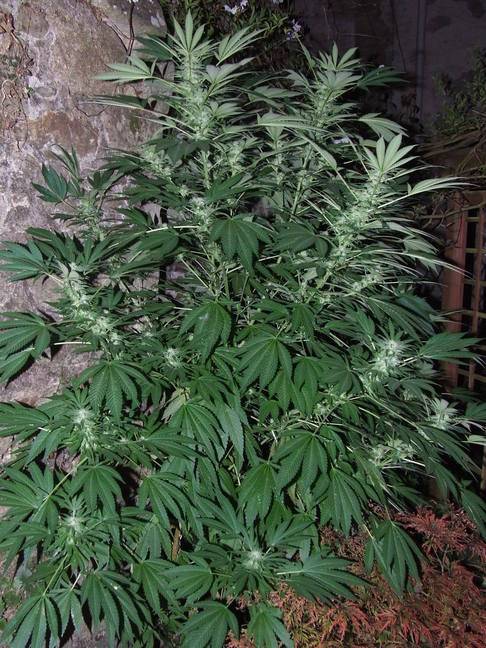
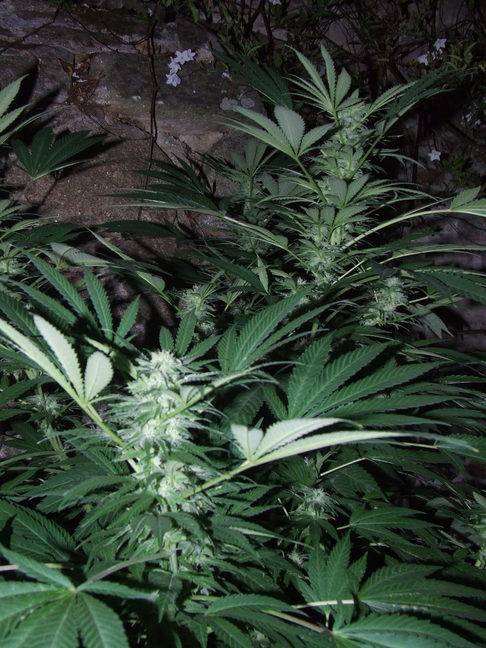
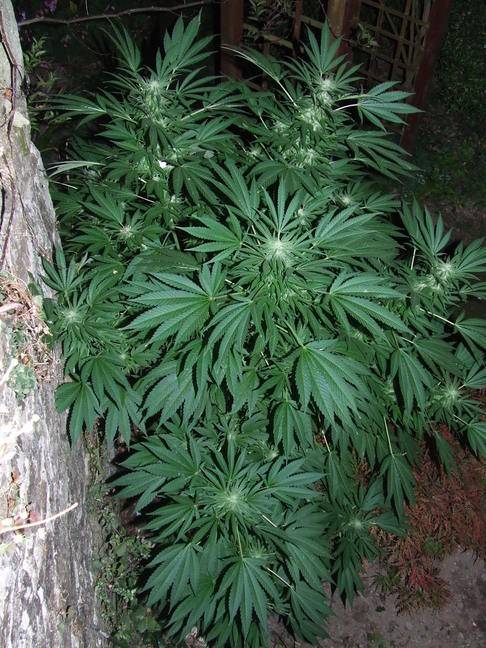
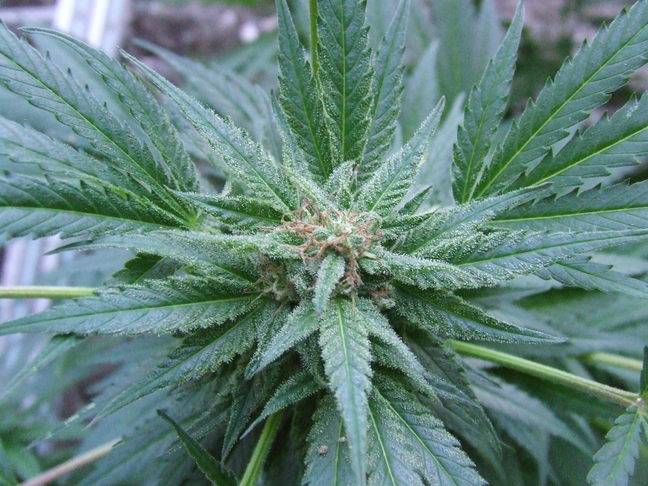
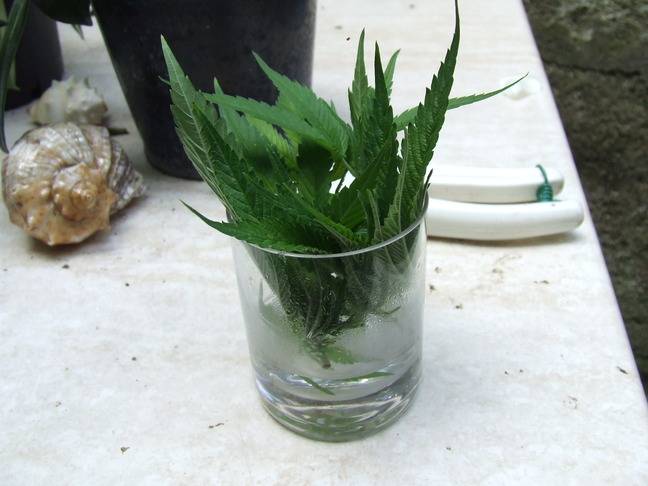
With the line I also have a backcross F2bx (mom Julia x papa F2) named FF10 and made by bro Mickey alias Upok in South of France. In few month i plan to F3bx those seeds indoor with MIS imported by Mriko (2004) and maybe release them with my future label seeds worldwide, 2016 project will see... With the original F2s i plan to F3ing them but i just wanna keep the britanny outdoor vibes and acclimatiz, wait n see for a french secure spot in few years!
@JGL, hey bro comment qu'c'est? Have you keep the purple flowers mom or x?
With the line I also have a backcross F2bx (mom Julia x papa F2) named FF10 and made by bro Mickey alias Upok in South of France. In few month i plan to F3bx those seeds indoor with MIS imported by Mriko (2004) and maybe release them with my future label seeds worldwide, 2016 project will see... With the original F2s i plan to F3ing them but i just wanna keep the britanny outdoor vibes and acclimatiz, wait n see for a french secure spot in few years!
@JGL, hey bro comment qu'c'est? Have you keep the purple flowers mom or x?
Last edited:
great job on taming the shrew roms. 
I had some mis from rsc that took it down in the low 20's f. very very cold. it depends on what pheno you run me thinks. the butt ugly mis I ran were totally bullet proof re mold, freezing weather.
looks like you got a great indoor potential ilb product from the rsc line.
I had some mis from rsc that took it down in the low 20's f. very very cold. it depends on what pheno you run me thinks. the butt ugly mis I ran were totally bullet proof re mold, freezing weather.
looks like you got a great indoor potential ilb product from the rsc line.
Thank you Idiit bro MIS well deserve, i see the line like the best indica/sativa breed of all time. Big up to the old Afghan farmers lovin!
Yah MIS love the winter and the cold, beautiful black/purple colors appear easy. By cons it needs dry air, from my experience she doesn't survive the ocean wet climate of my lat. 47N.I had some mis from rsc that took it down in the low 20's f. very very cold. it depends on what phenol you run me thinks. the butt ugly mis I ran were totally bullet proof re mold, freezing weather.
Last edited:
Forgive my ignorance, but what is RSC?
Thanks in advance
Thanks in advance

Coughie
Member
Forgive my ignorance, but what is RSC?
Thanks in advance
The Real Seed Company
Any chance there's any F1's around, these days?
Mazar is my 'holy grail', and I cant find it lol
Oh wow there are four pages to this thread. It did not show that when I asked the question. The bonus is I got to read the other three pages. Fascinating to say the least, I learned a lot and thank all of you involved for your input! Great stuff!
Please by all means, carry on!
Please by all means, carry on!

Oldganjafarmer
New member
hello roms, precious this mazar Afghan, very resinous! a greeting
Thx OGF, greetings!
In absolute the MIS is enough fine as it is (indi/sati effects) and i think it is already a F1 at its source but crossing her is also a holy grail i agree bro! I started the cross with Swazi rooi few years ago, have to find the time to F2ing them now but i prefer my other cross with the Red Thaï already F2ed! Maybe a little 300s release of them next year wil see. Peace kenavo
I started the cross with Swazi rooi few years ago, have to find the time to F2ing them now but i prefer my other cross with the Red Thaï already F2ed! Maybe a little 300s release of them next year wil see. Peace kenavo
Any chance there's any F1s around, these days?
Mazar is my 'holy grail', and I cant find it lol
In absolute the MIS is enough fine as it is (indi/sati effects) and i think it is already a F1 at its source but crossing her is also a holy grail i agree bro!
 I started the cross with Swazi rooi few years ago, have to find the time to F2ing them now but i prefer my other cross with the Red Thaï already F2ed! Maybe a little 300s release of them next year wil see. Peace kenavo
I started the cross with Swazi rooi few years ago, have to find the time to F2ing them now but i prefer my other cross with the Red Thaï already F2ed! Maybe a little 300s release of them next year wil see. Peace kenavo


